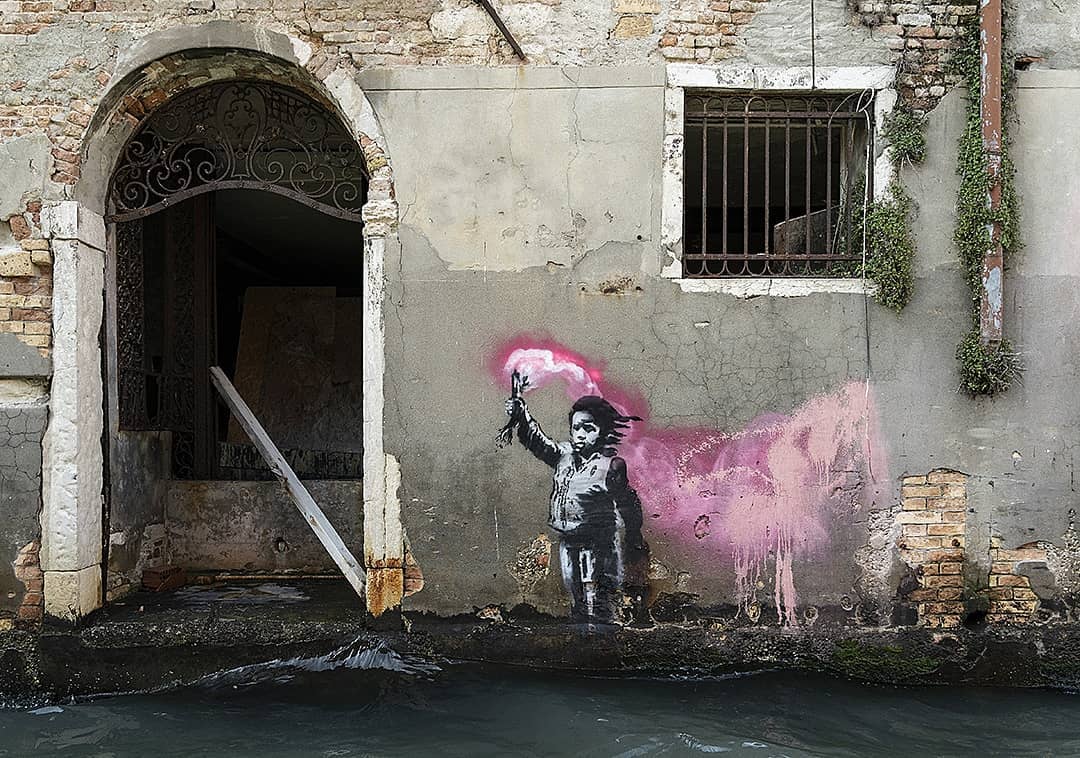Conservation advocates want it saved, while critics say the British artist may have intended for the work to fade over time.
The scaffoldings are now up in what can be seen as the first step toward restoring a six-year-old mural of elusive street artist Banksy, Reuters reported. Called the “Migrant Child,” it depicts a boy wearing a life jacket and holding a pink flare. In 2019, it appeared—like all of Banksy’s other works—on the side of a 17th-century, then-unoccupied building called the Palazzo San Pantalon in Venice.
The work reflects the pseudonymous British artist’s support for migrant sea rescue charities, one of his many advocacies. Last year, for instance, Banksy—known for his social and political activism—funded a migrant rescue ship which was blocked by Italian authorities.
Venice is notoriously humid, with its oppressive humidity inevitably taking a toll on the mural, causing it to slowly fade away. To make matters worse, it was painted on a wall that faces the Rio Novo canal and the palazzo itself is also on the verge of decay. The mural is constantly faced with the triple-whammy of humidity, salty air, and rising water levels, leaving many to worry that the haunting work will fade into oblivion if left to the mercy of the elements.
Related story: Banksy’s animal mural series in London gets its ninth and final piece
Related story: Art and social critique converge in this Banksy exhibition in Singapore
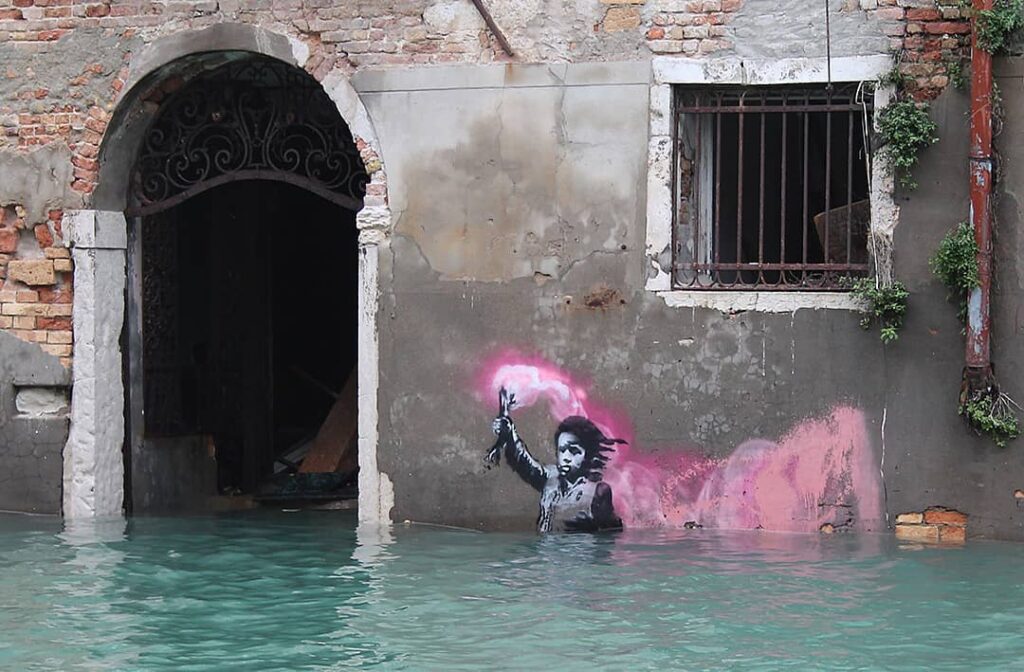
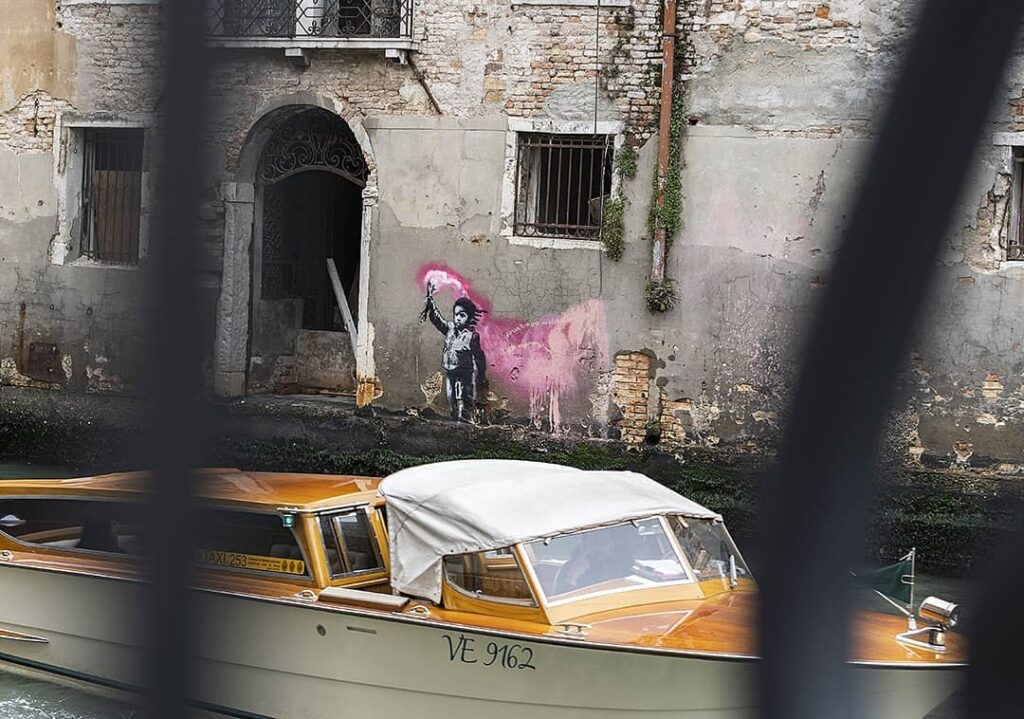
But not all art aficionados are warm about the idea of the “Migrant Child” being restored. Given the popularity of the artwork and the Italians’ passion for the arts, the situation sparked a heated debate, with the main question being: as a form of street art, wasn’t the mural’s ephemeral nature the point?
Critics argue that Banksy is fully aware of the poor conditions of the spot where he painted “Migrant Child,” so he may have intended for the work to deteriorate over time. The street artist Evyrein told Euronews that “Banksy was no fool” and he knows his creation wasn’t meant to endure. “If I were ever asked to alter a fellow artist’s work, I would decline unless I had their explicit consent,” he added.
Rosanna Carrieri, a cultural activist, said in an article on Artnet, that officials should engage with Banksy and the local community before restoring the work, an attempt she criticized as capitalizing on his fame.
On the other side of the fence, Marco Goldin, an Italian art critic and advocate of conservation suggested that the work be “detached from the wall, protected and exhibited in safe conditions.”
Italian law states that decisions regarding public art made less than 70 years ago do not fall under the jurisdiction of the state body that oversees heritage preservation. So when approached by Venice Mayor Luca Brugnar, for help, Vittorio Sgarbi, Undersecretary for Culture, took it upon himself to have the work restored through private funding—a move which sparked the fierce debate between those for conservation and those who’d rather the mural be left on its own.
In the same Euronews article, Sgarbi, suggested the work is now property of the local authorities, saying: “I have no intention of consulting the artist: the artwork was created illegally, and we can do as we please with it.” He also acknowledged the “significant sociological value” of the mural, with so many tourists taking photos of it.
Related story: Banksy indoors: The irony of art and social conscience converging in a place like BGC
Related story: Louvre shuts down as staff go on sudden strike due to overtourism
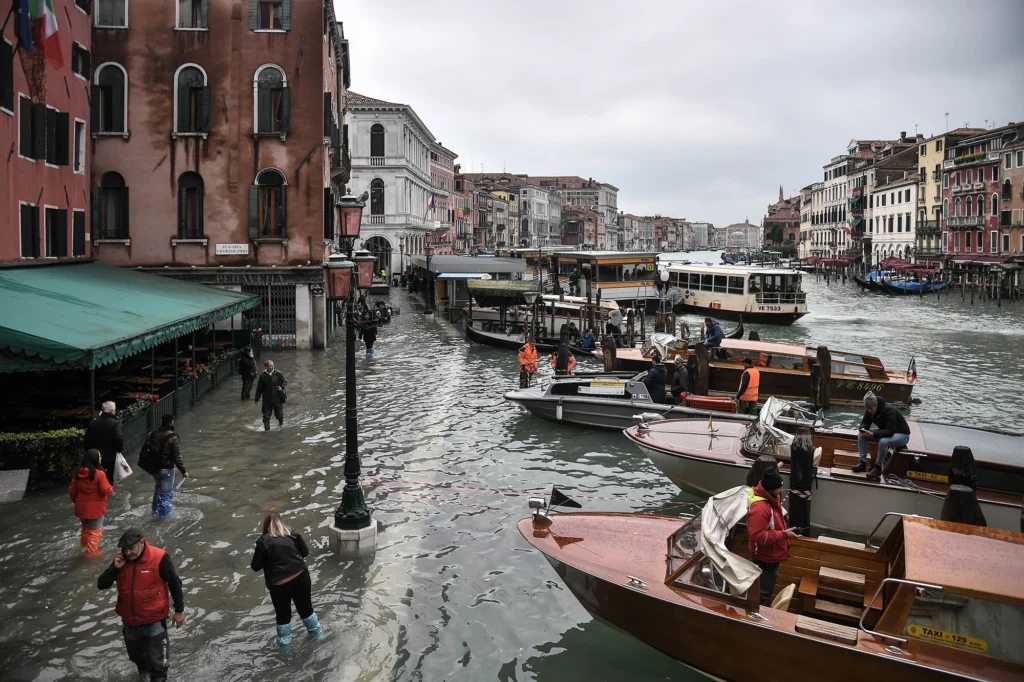
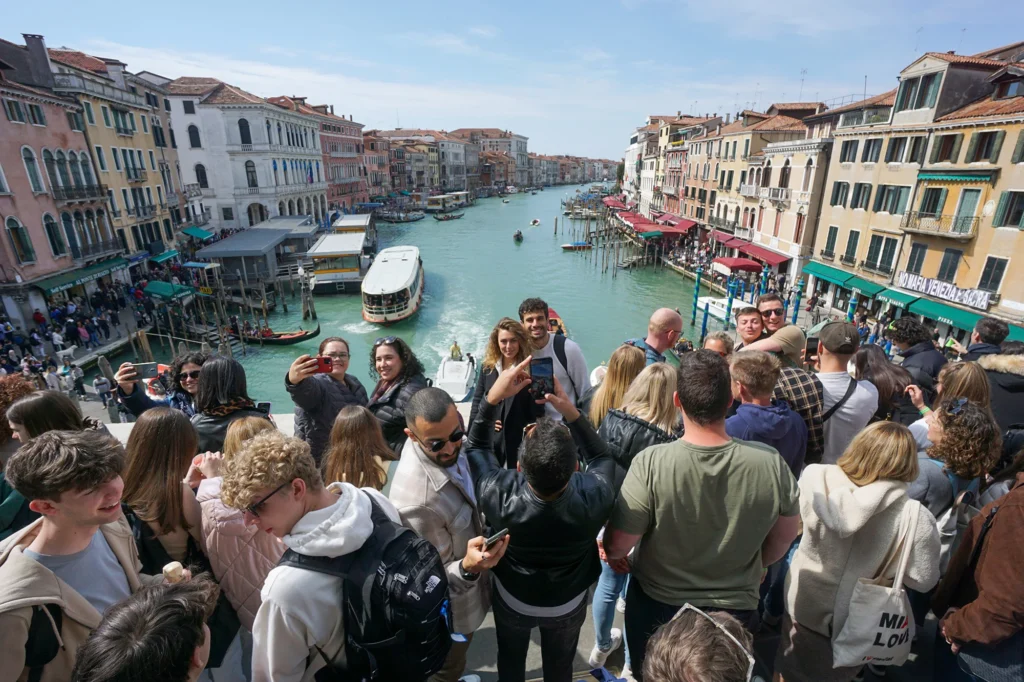
It was in October 2023 when Italy’s culture ministry announced that a then-unnamed Italian bank would be funding the restoration. True enough, in 2024, Banca Ifis (yes, the bank has been named) had bought the building and is now funding the palazzo’s entire restoration, mural included.
The same Reuters article mentioned that the bank intends to transform the palazzo into an exhibition space linked to the Venice Biennale art fair. The well-known British architecture and design firm Zaha Hadid Architects studio is working on the renovation project.
The slow surrender of the Banksy mural to harsh conditions is a reflection of the much bigger threat of decay looming over the whole of Venice. For starters, the city called La Serenissima , or the most serene, is literally sinking—a worrying 25 centimeters, or nearly 10 inches in the past century, according to a study.
It is also metaphorically sinking under the weight of mass tourism. The POST has previously reported on how, at peak times, as many as 100,000 visitors stay overnight in the historic center of Venice, double the resident population of just 50,000. Over the weekend, a small protest was held to denounce two hotels recently built in an area that had been hotel-free.
Related story: Starting today, Venice implements a five-euro day pass in a push against overtourism
Related story: ‘Go home!’: Overtourism sparks ‘revulsion‘ among locals in Spain

